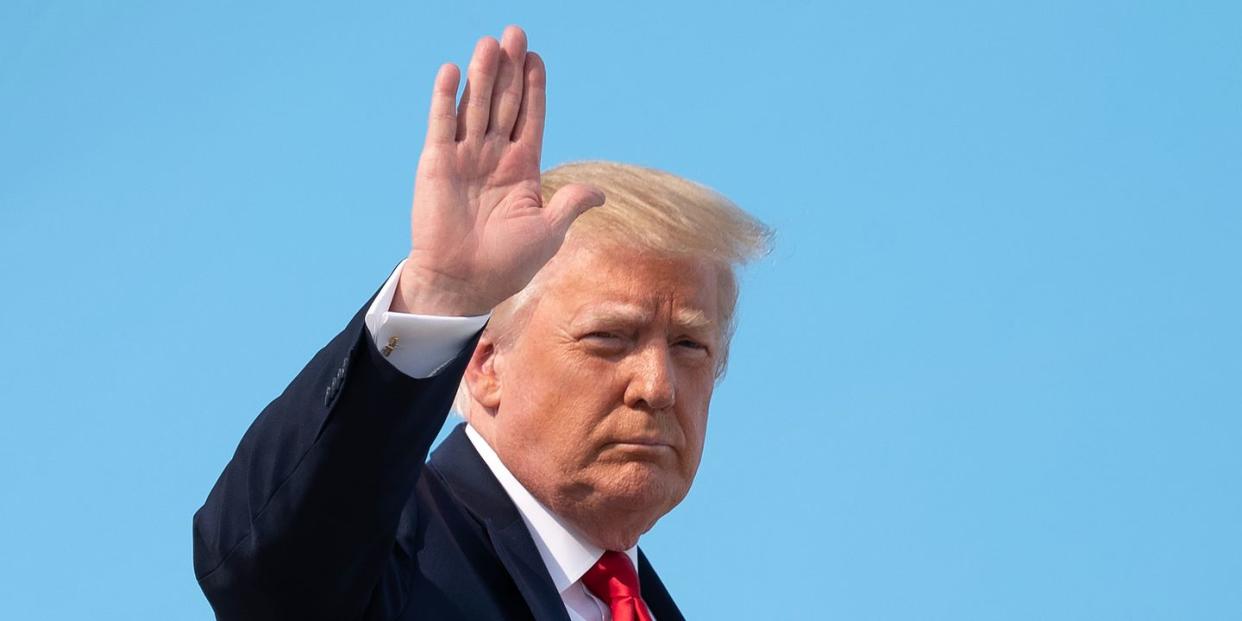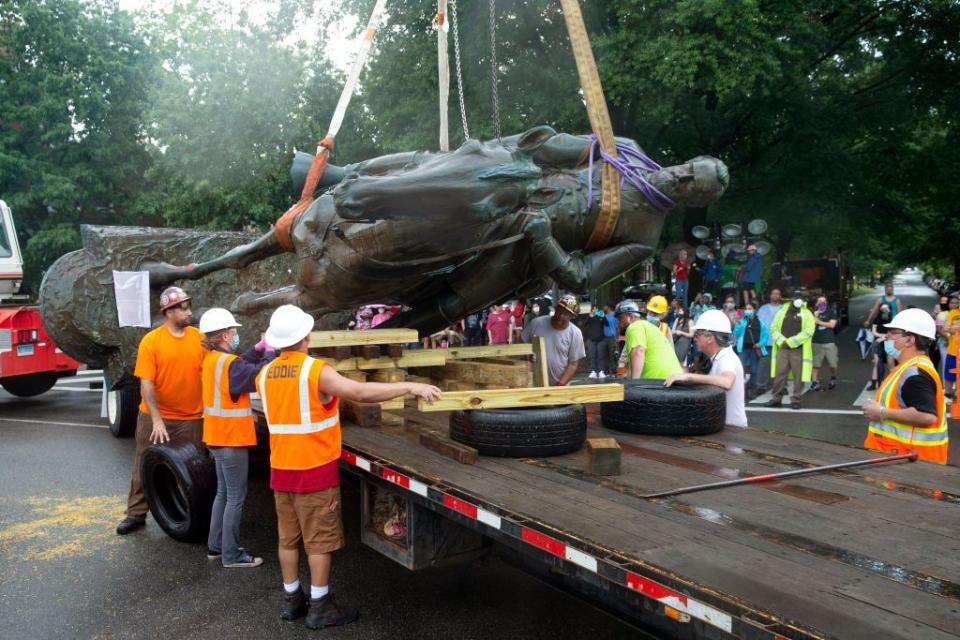Donald Trump Orders the Creation of a "National Garden of American Heroes"

In recent weeks, the Black Lives Matter movement has helped to spark a national conversation about monuments in this country, and who deserves (and does not deserve) to be venerated with a physical memorial.
Statues honoring Confederate soldiers and Christopher Columbus, as well as tributes to enslavers and other people who participated in the slave trade, have been targeted by the protests that followed the death of George Floyd at the hands of police officers in Minneapolis. In some cases, protestors defaced or removed the statues. In others, politicians have preemptively called for the removal of the sculptures.

President Trump has frequently voiced his displeasure on Twitter about the removal of confederate statues, and this past weekend, at a campaign rally at Mount Rush more, he announced he was ordering the creation of a new statuary park at a location that's yet to be determined.
"I am announcing the creation of a new monument to the giants of our past. I am signing an executive order to establish the National Garden of American Heroes, a vast outdoor park that will feature the statues of the greatest Americans to ever live," he said in a speech that condemned the protestors.
Shortly after he addressed the crowd, the White House released the executive order creating the National Garden, in which Trump proclaims that his administration will “not abide an assault on our collective national memory.”
The document calls for the park to be open by July 4, 2026, established a task force "for Building and Rebuilding Monuments to American Heroes," and outlined the criteria regarding who should be honored in the park:
Statues should depict historically significant Americans ... who have contributed positively to America throughout our history. Examples include: the Founding Fathers, those who fought for the abolition of slavery or participated in the underground railroad, heroes of the United States Armed Forces, recipients of the Congressional Medal of Honor or Presidential Medal of Freedom, scientists and inventors, entrepreneurs, civil rights leaders, missionaries and religious leaders, pioneers and explorers, police officers and firefighters killed or injured in the line of duty, labor leaders, advocates for the poor and disadvantaged, opponents of national socialism or international socialism, former Presidents of the United States and other elected officials, judges and justices, astronauts, authors, intellectuals, artists, and teachers. None will have lived perfect lives, but all will be worth honoring, remembering, and studying.
The order gives the task force 60 days to present plans and to propose a location for the garden. The document also specifically called out 31 Americans that the garden must memorialize (though there could be additions). The list is primarily made up of white men, some of whom enslaved people, and is a curious assembly of names ranging from conservative religious leader Billy Graham to First Lady Dolley Madison, and abolitionist Harriet Tubman. But just as notable as the names included on the initial list are the people left off it. For example, there are no religious leaders of non-Christian faiths, no Democrats, and few people of color.
See the full list here:
The National Garden should be composed of statues, including statues of John Adams, Susan B. Anthony, Clara Barton, Daniel Boone, Joshua Lawrence Chamberlain, Henry Clay, Davy Crockett, Frederick Douglass, Amelia Earhart, Benjamin Franklin, Billy Graham, Alexander Hamilton, Thomas Jefferson, Martin Luther King, Jr., Abraham Lincoln, Douglas MacArthur, Dolley Madison, James Madison, Christa McAuliffe, Audie Murphy, George S. Patton, Jr., Ronald Reagan, Jackie Robinson, Betsy Ross, Antonin Scalia, Harriet Beecher Stowe, Harriet Tubman, Booker T. Washington, George Washington, and Orville and Wilbur Wright.
The order also declares that the memorials "should be lifelike or realistic representations of the persons they depict, not abstract or modernist representations."
Read the full executive order.
You Might Also Like

